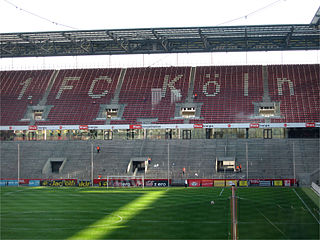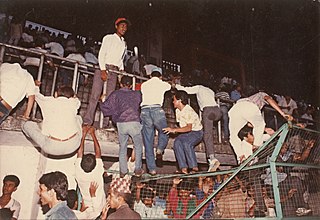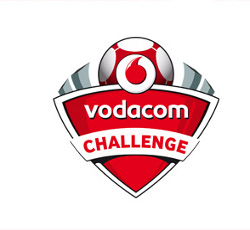Related Research Articles

Kaizer Chiefs Football Club are a South African professional football club based in Naturena, Johannesburg South, that plays in the DStv Premiership. The team is nicknamed AmaKhosi, which means "Lords" or "Chiefs" in Zulu, and the Phefeni Glamour Boys. Chiefs have won 13 league titles and over 42 cup trophies. As a result, they hold the most trophies amongst all clubs in South Africa and are the most successful team in South African football history since the start of the top flight in 1970. They are the most supported club in the country, drawing an average home attendance of 16,144 in the 2019–20 season, the highest in the league. It led to them being dubbed "The Biggest Club" in Southern Africa. The team plays its home matches at the 94,797-capacity FNB Stadium.

Orlando Pirates Football Club is a South African professional football club based in Orlando, Soweto and plays in the top-tier system of Football in South Africa known as DStv Premiership. The team plays its home matches at Orlando Stadium in Soweto.

The 1995 Rugby World Cup, was the third Rugby World Cup. It was hosted and won by South Africa, and was the first Rugby World Cup in which every match was held in one country.
The Hillsborough Stadium Disaster Inquiry report is the report of an inquiry which was overseen by Lord Justice Taylor, into the causes of the Hillsborough disaster in Sheffield, South Yorkshire, England, on 15 April 1989, as a result of which, at the time of the report, 95 Liverpool fans had died. An interim report was published in August 1989, and the final report was published in January 1990.

Ellis Park Stadium is a rugby union and association football stadium in the city of Johannesburg, Gauteng Province, South Africa. It hosted the final of the 1995 Rugby World Cup, which was won by the country's national team, the Springboks. The stadium was the country's most modern when it was upgraded in 1982 to accommodate almost 60,000 people. Today, the stadium hosts both football and rugby and is also used as a venue for other large events, such as open-air concerts. It has become synonymous with rugby as the only time when rugby was not played at Ellis Park was during 1980 and 1981, when the stadium was under construction during the upgrade.
First National Bank Stadium or simply FNB Stadium, also known as Soccer City and The Calabash, is an association football (soccer) and Rugby union stadium located in Nasrec, bordering the Soweto area of Johannesburg, South Africa. The venue is managed by Stadium Management South Africa (SMSA) and is a home of Kaizer Chiefs F.C. in the South African Premier Soccer League as well as key fixtures for the South African national football team.
Oppenheimer Stadium is a football (soccer) stadium in Orkney, South Africa. It currently has a capacity of 23,000, but it has increased to 40,000 during the 2010 FIFA World Cup.
The Accra Sport Stadium disaster occurred at the Ohene Djan Stadium, Accra, Ghana on May 9, 2001. It took the lives of 126 people, making it the worst stadium disaster to have ever taken place in Africa. It is also the third-deadliest disaster in the history of association football behind the Estadio Nacional disaster and Kanjuruhan Stadium disaster.
The Luzhniki disaster was a deadly human crush that took place at the Grand Sports Arena of the Central Lenin Stadium in Moscow during the 1982–83 UEFA Cup match between FC Spartak Moscow and HFC Haarlem on 20 October 1982. According to the official enquiry, 66 FC Spartak Moscow fans, mostly adolescents, died in the stampede, which made it Russia's worst sporting disaster. The number of fatalities in this crush was not officially revealed until seven years later, in 1989. Until then, this figure varied in press reports from 3 to 340 fatalities. The circumstances of this disaster are similar to those of the second Ibrox disaster in Scotland.

A terrace or terracing in sporting terms refers to the standing area of a sports stadium, particularly in the United Kingdom and Republic of Ireland. It is a series of concrete steps, with intermittent safety barriers installed at specific locations to prevent an excessive movement of people down its slope.
This is a list of events in South African sport in 2001.
The Oppenheimer Stadium disaster, or Orkney Disaster, at the Oppenheimer Stadium in the city of Orkney in South Africa's North West province was the second-worst sporting incident in South African history, with 42 deaths.

The 2009 Houphouët-Boigny stampede occurred on 29 March 2009 in the Stade Félix Houphouët-Boigny in Abidjan, Ivory Coast before a 2010 FIFA World Cup qualification match between Malawi and Ivory Coast. Nineteen people were killed and 135 were injured. In an attempt to control a stampede police fired tear gas into the crowds, who had begun jostling with each other at least 40 minutes before kick off. The match was particularly popular among locals, with world stars such as Didier Drogba, Sol Bamba and Salomon Kalou due to play for Ivory Coast.
The Vodacom Challenge celebrated its 10th anniversary in 2009 with the English Premier League side Manchester City touring South Africa and playing against two local PSL clubs, Orlando Pirates and Kaizer Chiefs. Kaizer Chiefs defeated star-studded Manchester City in the final to lift the title.

The Estadio Nacional disaster took place on 24 May 1964 at the Estadio Nacional in Lima, Peru, during a match between Peru and Argentina. An unpopular decision by the referee outraged the Peruvian fans, who invaded the pitch. Police retaliated by firing tear gas into the crowd, causing a mass exodus. The deaths mainly occurred from people suffering from internal hemorrhaging or asphyxiation from the crushing against the steel shutters that led down to the street. The incident is considered the worst disaster in the history of association football.

The Dasharath Stadium Disaster occurred on 12 March 1988 at the Dasharath Stadium in Kathmandu, Nepal during a football match between the Janakpur Cigarette Factory and Bangladeshi side Muktijoddha Sangsad KC for the 1988 Tribhuvan Challenge Shield. 93 people were killed and 100 more were injured when attempting to flee from a hailstorm inside the hypethral national Dasarath Rangasala Stadium. The Dasharath Stadium disaster was the 9th biggest stadium disaster until 2006 and the worst stadium disaster in Nepal.

The Vodacom Challenge celebrated its 11th anniversary in 2011 with the English Premier League side Tottenham Hotspur touring South Africa and playing against two local PSL clubs, Orlando Pirates and Kaizer Chiefs.

Crowd collapses and crowd crushes are catastrophic incidents that can occur when a body of people becomes dangerously overcrowded. When numbers are up to about five people per square meter, the environment may feel cramped but manageable; when numbers reach between eight and ten people per square meter, individuals become pressed against each other and may be swept along against their will by the motion of the crowd. Under these conditions, the crowd may undergo a progressive collapse where the pressure pushes people off their feet, resulting in people being trampled or crushed by the weight of other people falling on top of them. At even higher densities, the pressure on each individual can cause them to be crushed or asphyxiated while still upright.

On 24 January 2022, at least eight people were killed in a crowd crush at the south entrance of Olembe Stadium in Yaoundé, Cameroon. The incident occurred as fans were attempting to enter the arena to watch a football match between Cameroon and the Comoros at the 2021 Africa Cup of Nations.
The Arabian Gulf Cup "stampede" was a crowd crush that took place on 19 January 2023 outside the Basra International Stadium in the Iraqi city of Basra, ahead of the 25th Arabian Gulf Cup final between Iraq and Oman. Up to four people died and up to 60 were injured in the crush. The families of the dead blamed inadequate crowd control and ticketless fans for the death and injuries. The stadium security staff blamed ticketless fans.
References
- ↑ Said, Nick (29 July 2017). "Africa's tragic record of stadium disasters". ESPN.com. Archived from the original on 18 January 2018. Retrieved 13 September 2021.
- ↑ agencies, Staff and (12 April 2001). "Families mourn 43 killed in football stampede". the Guardian. Retrieved 13 September 2021.
- ↑ "IOL Feature - Ellis Park Soccer Disaster". Archived from the original on 28 August 2009. Retrieved 10 November 2009.